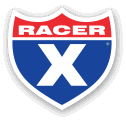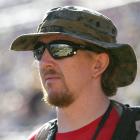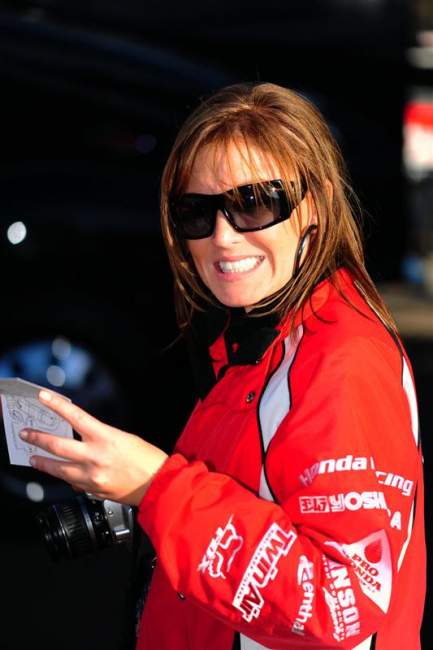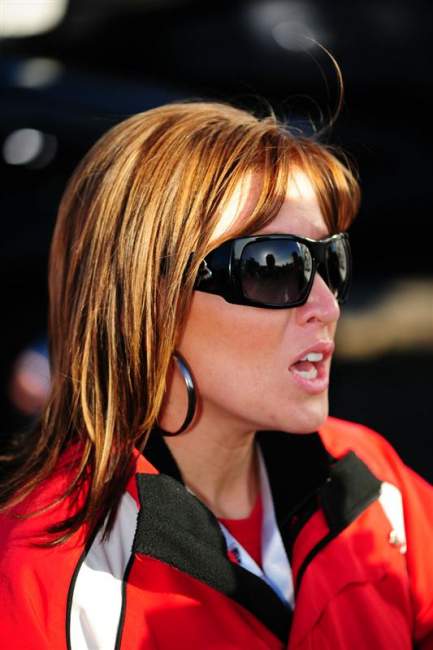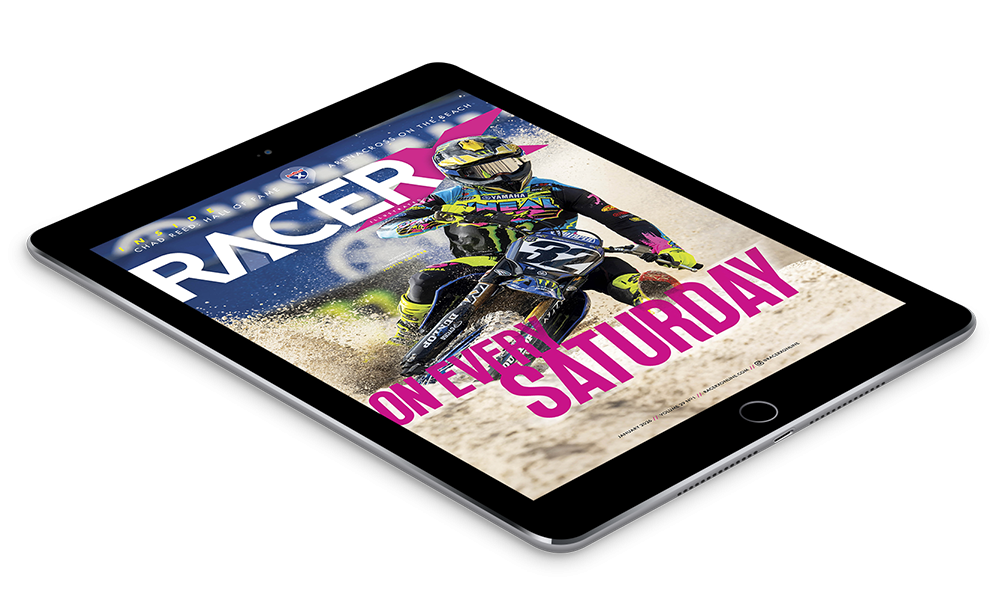Stephanie Nutt is a PR person for Honda by way of PR firm Vreeke & Associates who came all the way from Australia to work in the American motorcycle industry. Nutt did similar jobs Down Under before uprooting herself to head to California, and now spends most of her weekends traveling to the races, and weeks working to coordinate media opportunities with Honda and its riders. We talked to her for this week’s Between the Motos...
Racer X: Tell us a little bit about your background and how you came to work in the American motocross industry.
Stephanie Nutt: I worked in the motorsport industry for about the last seven years. I started out working in four-wheel motorsport back in Australia – the Touring Car series and things like that – and I did that for four and a half years, and then I went to work for a manufacturer in motorcycles in Australia for the last couple of years. Then, I had the opportunity to come to the U.S., and I was free and available to travel and do different things, and there was an opportunity here to come, so I just sort of grabbed the bull by the horns and I went for it, and I’ve been here for the last year and a half.
Usually when riders come from Australia, it’s because of the money here, so what was your excuse?
(Laughs) Definitely not the money – especially in today’s day and age... No, I’m just a happily single person traveling the world, and when an opportunity came up in the U.S. in something I knew and understood – a job that I obviously had a fair bit of experience in – there was no reason to say no. I was up for it and I’ve loved every minute that I’ve been here.
So what was the biggest thing you had to get used to coming to the U.S.?
The food... (Laughs) The food is nowhere near as good as it is back home. It’s just different – just very, very different. Driving on the other side of the road was pretty horrendous, I must say, for the first couple of months. I made some pretty crazy moves, going up and down streets the wrong way a couple of times – and people at work saw it, so that was pretty good. Especially if it’s really late and you’re tired, then you just kind of get in your car and you go to drive like you normally would, and your brain’s telling you to go on the other side of the road. I’ve driven out of the driveway out of work, twice now, and drove all the way up the road, late at night, and then stared at a set of headlights and wondered why the hell there was a set of headlights looking straight at me before realizing I was on the wrong side of the road. Also, it took me almost a year just to get to speak American. Our slang is a lot different, and it was hard sometimes to understand what people were saying – and it was probably hard for people to understand me for a while, too.
Stephanie Nutt: I worked in the motorsport industry for about the last seven years. I started out working in four-wheel motorsport back in Australia – the Touring Car series and things like that – and I did that for four and a half years, and then I went to work for a manufacturer in motorcycles in Australia for the last couple of years. Then, I had the opportunity to come to the U.S., and I was free and available to travel and do different things, and there was an opportunity here to come, so I just sort of grabbed the bull by the horns and I went for it, and I’ve been here for the last year and a half.
Usually when riders come from Australia, it’s because of the money here, so what was your excuse?
(Laughs) Definitely not the money – especially in today’s day and age... No, I’m just a happily single person traveling the world, and when an opportunity came up in the U.S. in something I knew and understood – a job that I obviously had a fair bit of experience in – there was no reason to say no. I was up for it and I’ve loved every minute that I’ve been here.
So what was the biggest thing you had to get used to coming to the U.S.?
The food... (Laughs) The food is nowhere near as good as it is back home. It’s just different – just very, very different. Driving on the other side of the road was pretty horrendous, I must say, for the first couple of months. I made some pretty crazy moves, going up and down streets the wrong way a couple of times – and people at work saw it, so that was pretty good. Especially if it’s really late and you’re tired, then you just kind of get in your car and you go to drive like you normally would, and your brain’s telling you to go on the other side of the road. I’ve driven out of the driveway out of work, twice now, and drove all the way up the road, late at night, and then stared at a set of headlights and wondered why the hell there was a set of headlights looking straight at me before realizing I was on the wrong side of the road. Also, it took me almost a year just to get to speak American. Our slang is a lot different, and it was hard sometimes to understand what people were saying – and it was probably hard for people to understand me for a while, too.
What about your position now at Vreeke and Associates? What is it that you do there, and what is it like?
Primarily, my role when I came here is that I look after press and media for the Honda race team, which is primarily the Honda Red Bull Racing team, and I look after the GEICO Powersports team a bit as well. My job is just to coordinate outside media for both teams between the races, and then turn up on race day and hopefully put some good stories together.
How has it been working with the American riders? And how much different are they here compared to back home?
I think I’m really lucky, actually, and I’m not just saying this, because all of the guys that I work with on the Honda teams are really good guys and are really, really easy to work with. The biggest difference with motocross racing in Australia is that it’s a lot more relaxed, and it’s kind of like the guys are really easy to get to go somewhere with you and your company, whereas the guys here have a lot more on their schedules so you have to make things work with their trainers and their entourage and things, so it can get a bit more interesting. On a whole, though, the team and the guys, everybody, they’re all really good, and they’re all very professional and very switched on. The guys understand why they do it and how important it is to Honda, so they’re really good.
So, since you’re doing this whole “world travel” thing, how long do we expect to see you around here before you bail back to Australia or head to Europe?
(Laughs) Depends on what the Immigration Department says. It’s not that easy. I would love to be here a couple more years, at least. The first year, you spend the whole time getting to know the people and how everything works, and adjusting to doing everything backward (laughs), so it would be disappointing to not stay here for longer to actually get the full effect of it all and be able to fully appreciate the environment and do the job the best you can. I suppose the hardest thing in my role in media is getting to know who everybody is with the different publications and websites, and I basically spent the first year getting to know everybody. Now, it’s a whole lot easier to do my job. I’d love to be here a few more years to make it all worthwhile.
Primarily, my role when I came here is that I look after press and media for the Honda race team, which is primarily the Honda Red Bull Racing team, and I look after the GEICO Powersports team a bit as well. My job is just to coordinate outside media for both teams between the races, and then turn up on race day and hopefully put some good stories together.
How has it been working with the American riders? And how much different are they here compared to back home?
I think I’m really lucky, actually, and I’m not just saying this, because all of the guys that I work with on the Honda teams are really good guys and are really, really easy to work with. The biggest difference with motocross racing in Australia is that it’s a lot more relaxed, and it’s kind of like the guys are really easy to get to go somewhere with you and your company, whereas the guys here have a lot more on their schedules so you have to make things work with their trainers and their entourage and things, so it can get a bit more interesting. On a whole, though, the team and the guys, everybody, they’re all really good, and they’re all very professional and very switched on. The guys understand why they do it and how important it is to Honda, so they’re really good.
So, since you’re doing this whole “world travel” thing, how long do we expect to see you around here before you bail back to Australia or head to Europe?
(Laughs) Depends on what the Immigration Department says. It’s not that easy. I would love to be here a couple more years, at least. The first year, you spend the whole time getting to know the people and how everything works, and adjusting to doing everything backward (laughs), so it would be disappointing to not stay here for longer to actually get the full effect of it all and be able to fully appreciate the environment and do the job the best you can. I suppose the hardest thing in my role in media is getting to know who everybody is with the different publications and websites, and I basically spent the first year getting to know everybody. Now, it’s a whole lot easier to do my job. I’d love to be here a few more years to make it all worthwhile.
